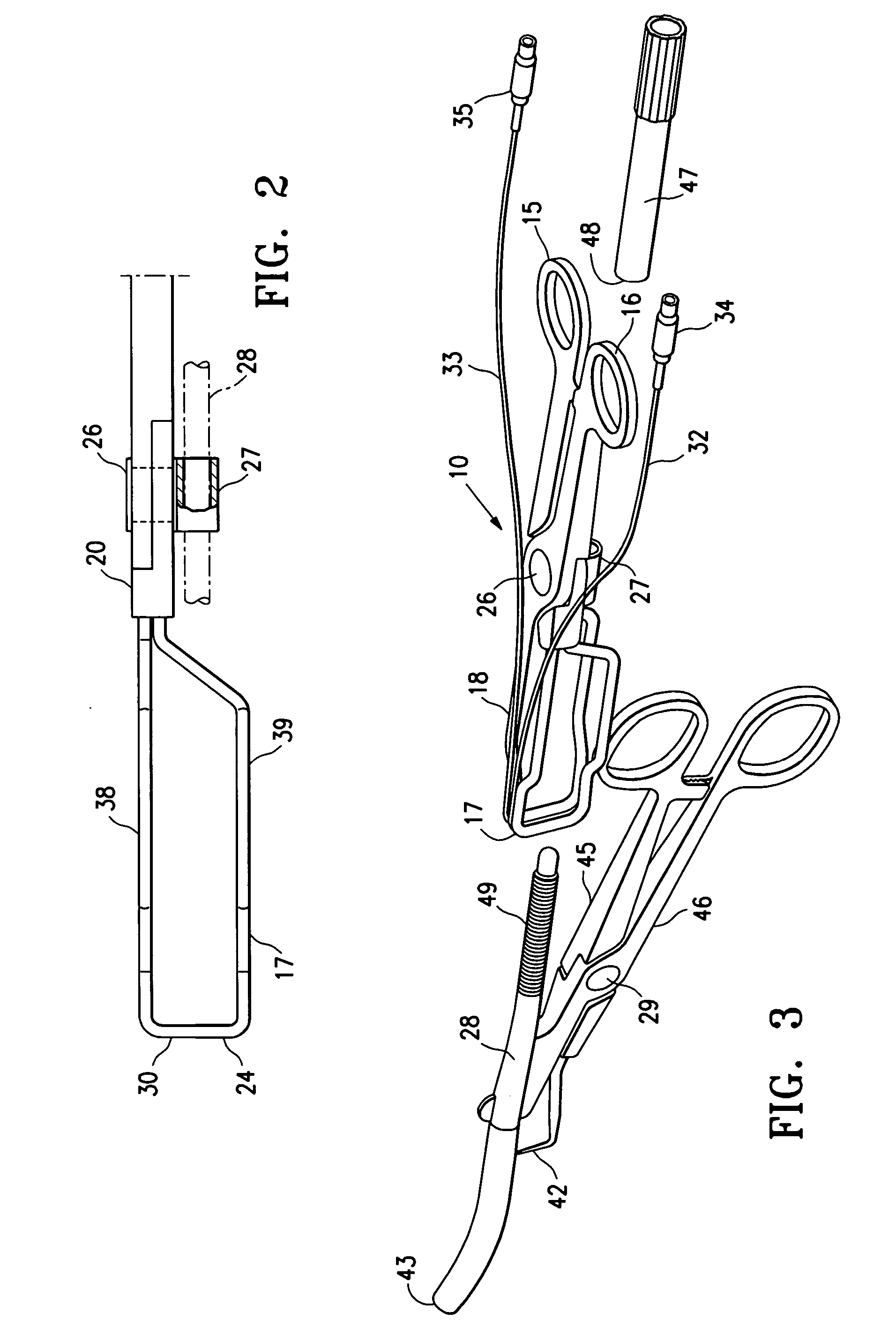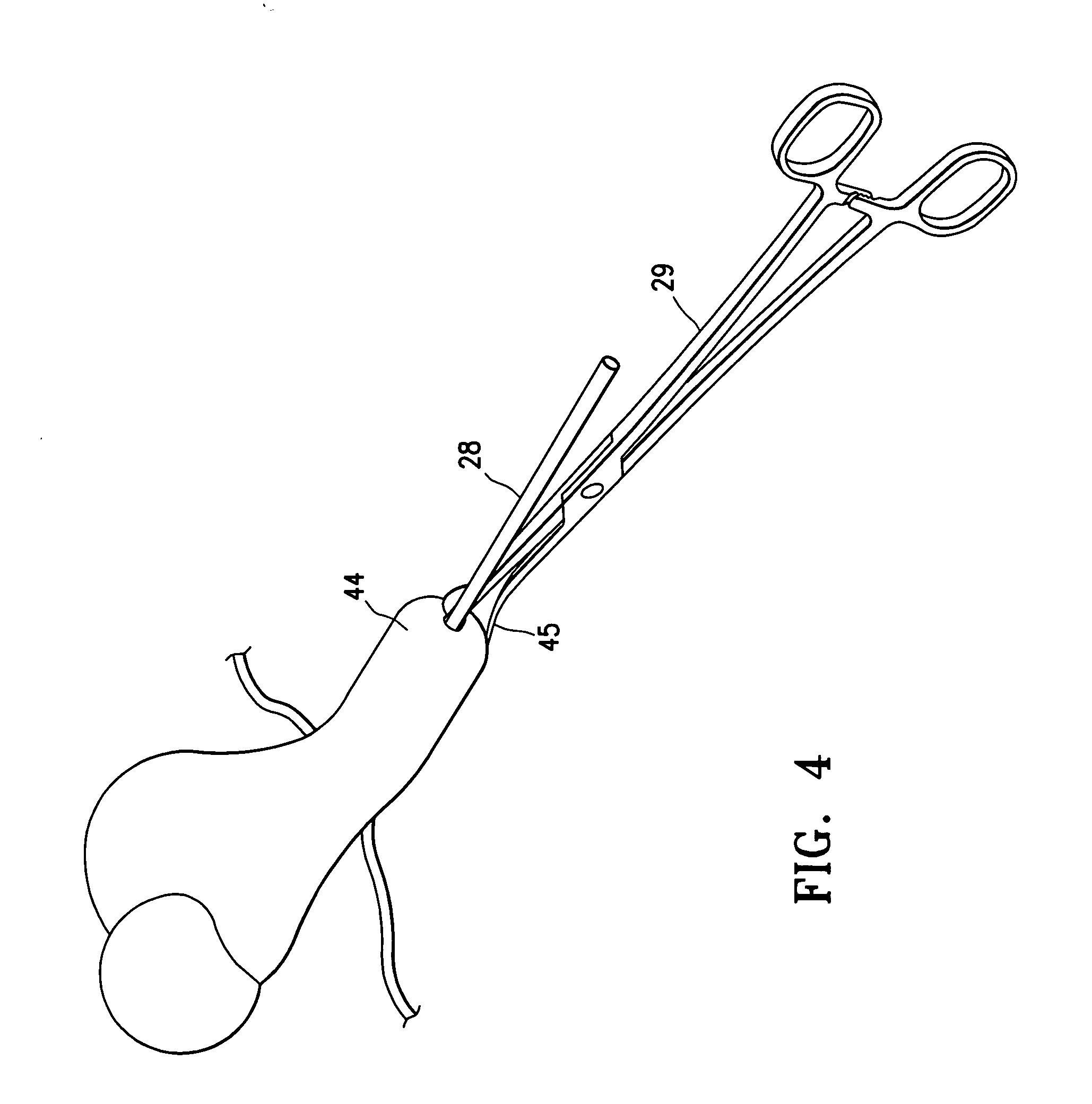[0013] The treatment embodying features of the invention basically involves occluding one or both of the patient's uterine arteries with an intravaginal device to form a
thrombus within the occluded artery or arteries and administering an agent which will prolong the
occlusion of the artery or arteries after removal of the occluding device or initiate or accelerate fibroid
cell apoptosis (
programmed cell death). The agent may act to retard or prevent
lysis of the
thrombus or may act to reduce uterine
blood flow which can retard
lysis. The agent can be an anti-
fibrinolytic agent administered to the patient to retard or prevent
lysis of the thrombus formed by the uterine artery
occlusion for essentially the duration of the treatment. By maintaining an effective amount of the anti-
fibrinolytic agent within the patient's
blood stream, the lysis of the thrombus within the uterine arteries after the occluding device (e.g. clamp) is removed is retarded or prevented. This allows the occluding device to be removed earlier thereby shortening the clamping period. Moreover, the uterine artery occlusion after occluding
device removal can be extended by maintaining an effective level of anti-
fibrinolytic agent within the patient.
[0014] After the uterine arteries have been occluded for a
sufficient time, the administration of the anti-fibrinolytic agent can be terminated so that lysis of the thrombus is initiated by the normal lysis cycle and
blood flow through the arteries can resume. Administering the anti-fibrinolytic agent allows for
blood stasis to occur within the
uterus and eliminates or retards the
clot lysis cycle which can minimize the effect of the treatment. The stasis in the uterus initiates a clotting
cascade and by minimizing the competitive lysis cycle a quicker treatment can be delivered. The clot is maintained after removal of the occlusion
system by the continued administration of the anti-fibrinolytic agent.
[0016] Another agent which can enchance the effects of the clamping of the uterine arteries is misoprostol. An effective level of Misoprostol can reduce blood flow in the uterus and reduce the amount of fibrinolytic agent reaching the thrombus thereby extending the period in which the thrombus will remain in place. Additionally, other agents capable of reducing uterine artery blood flow can be administered.
[0021] In one embodiment of the invention, one or more blood flow sensors, preferably based on
Doppler ultrasound, are provided on at least one of the pressure applying surfaces to aid in the location of the patient's uterine arteries, and to monitor the occlusion thereof. When the pressure applying surfaces of the jaws are pressed against the wall of the
vaginal fornix, the
vaginal wall is distended so as to more closely approach a uterine artery. Applying tension to the
uterine cervix by the tenaculum or tenaculum type device or implement, including
forceps, suction devices, and the like, help to reduce the distance from the patient's
vaginal fornix to the patient's uterine artery.
[0023] The invention allows for the non-surgical location and occlusion of blood vessels such as the uterine artery, providing effective
therapeutic treatment. Importantly, the present invention allows for the occlusion of a
female patient's uterine artery without the need for
radiographic equipment or for extensive training in the use of radiographic techniques. The devices and methods are simple and readily used for treating
uterine fibroids,
dysfunctional uterine bleeding (DUB),
adenomyosis, post-partum hemorrhage, and other uterine disorders. The mechanical occlusion portion of the
treatment period is shortened considerably by the administration of an anti-fibrinolytic agent to the patient to maintain the occluding thrombus within the patient's uterine arteries. The shortened treatment times allows the patient to be more mobile, simplifies the treatment and reduces the patient monitoring and care needed. Furthermore, reduced artery clamping periods reduces the trauma to the patient's
cervix and
vaginal mucosa. The shorter treatment periods also increases the number of patient's which can be treated over a given period.
 Login to View More
Login to View More 


